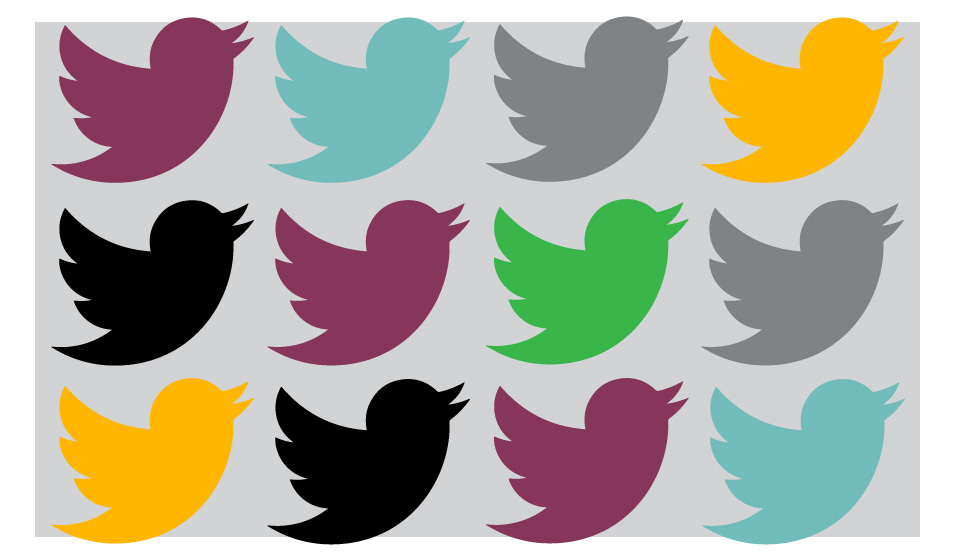
Twitter is great. It’s fast, it’s fun and it’s easy to digest—and that makes it an ideal vehicle to promote your content to a wider audience.
But, like most game-changing innovations, Twitter doesn’t play by the rules. Tweets are unique beasts, and unlike any outbound communications that we as copywriters may have tamed in the past.
But I already know Twitter – I’ve used it since day one!
Tweeting your content to a B2B audience is not the same as using your personal account. We’re not stirring up banter, chiming in on celebrity meltdowns or sharing HD images of our morning coffee—we’re trying to encourage people to find out more about what we have to say on a particular topic.
Personal tweets are like thinking out loud, but when we’re promoting content, we’re going to need something to actually say.
So you’re saying it needs to be dry and impersonal? Who’s gonna respond to that?!
Well, nobody! In fact that’s not what I’m saying at all, but it is a good point. Just because our tweets have purpose, doesn’t mean they should come across as formal, dry and reminiscent of the B2B marketing of days gone by.
The very nature of Twitter’s character limit forces us to be succinct and casual if we want to get our point across. We should use it as a chance to humanise the business, connect with our audience on a more personal and emotional level, and offer nuggets of professional insight while guiding prospects to discover helpful and informative content.
You want to get all of that into 140 characters? Good luck mate.
Actually, more like 116 if we want to leave room for @ mentions, # hashtags and personal input, but thanks all the same. It’s a challenge no doubt, but that’s where the skill and finesse comes in. With practice it’s very achievable, and once you’ve established what makes your audience tick, it becomes second nature.
I can spot a marketing tweet a mile off – how are we going to trick our audience into thinking ours are legitimate?
We’re not tricking them at all! If you feel like you have to dress up your content or oversell it, it’s an issue with the content itself. We want to provide our audience with content that is genuinely helpful, informative, entertaining or insightful so they will grow to see us as a respected thought leader and trusted subject expert. That’s why we started this content marketing malarkey in the first place, remember?!
Break it down for me then, what goes into a great content-promoting tweet?
Before you decide what’s going into your tweet, you need to understand what you want to get out of it. A good tweet should do as many of these as possible:
- Elicit a physical response, be it a click through, reply, favourite or retweet
- Elicit an emotional response and improve the brand’s standing in the eyes of the customer or prospect
- Get people talking and spark further conversation
- Teach the reader something new about a problem they’re facing or aspiration they have
Cool, that seems reasonable. What’s next?
There are 4 steps to writing a great promotional tweet:
Step 1: Understand your audience and what matters to them
Chances are that you’ll already be comfortable with this if you’re experienced in writing for the audience that your tweets are going out to. If not, you’ll need to do some digging and find out what current issues make your audience tick. (Our guide to creating buyer personas in minutes may help.)
Step 2: Select your content and consider what you really want to say
Got some great content to share relating to a topic that your audience cares about? Great, that’s going to be your focus.
Step 3: Be honest and understand the value of your content
If you’re sharing content, you need to be up front about it. Read it once, read it again, and really understand what the reader can get from it. That’s going to make up the bulk of your tweet. If you think you need to oversell it, reassess how useful it really is.
Step 4: Be human and be concise
Your audience are people, address them as such. Be succinct and chatty, use questions to evoke responses, or leave them with something that will really get them thinking and inspire them to click through. A bland call to action never started a productive conversation.
Lovely, seems a little bit flexible though. I am a B2B copywriter, I need rigid rules or I end up going off-piste and having my wrist slapped.
This is social communication; you can afford to be a little more daring and casual than usual. But alright, I’ll leave you with some quick dos and don’ts.
Do:
- Talk like a human and use empathy to connect with your audience
- Make your points confidently and maintain an aura of expertise
- Strike while the iron’s hot when promoting content related to emerging trends
- Have faith in the quality of your content and share it with pride
- Be as concise as possible – less is more!
- Take the occasional risk and try new ideas for engaging audiences
Don’t:
- Come across as cocky or arrogant
- Be overly chatty or casual – maintain professionalism
- Push content without explaining it or showing what it can help your audience gain
- Make it all about you – speak about topics and issues, not your company and solutions
Well, you’ve certainly given me a lot to think about.
Just remember to be confident, be human, and never stop listening to your audience—they’ll let you know what kinds of content they want to see more of.
Want more advice on writing for Twitter? Then why not listen to episode 18 of the Radix Copycast.
